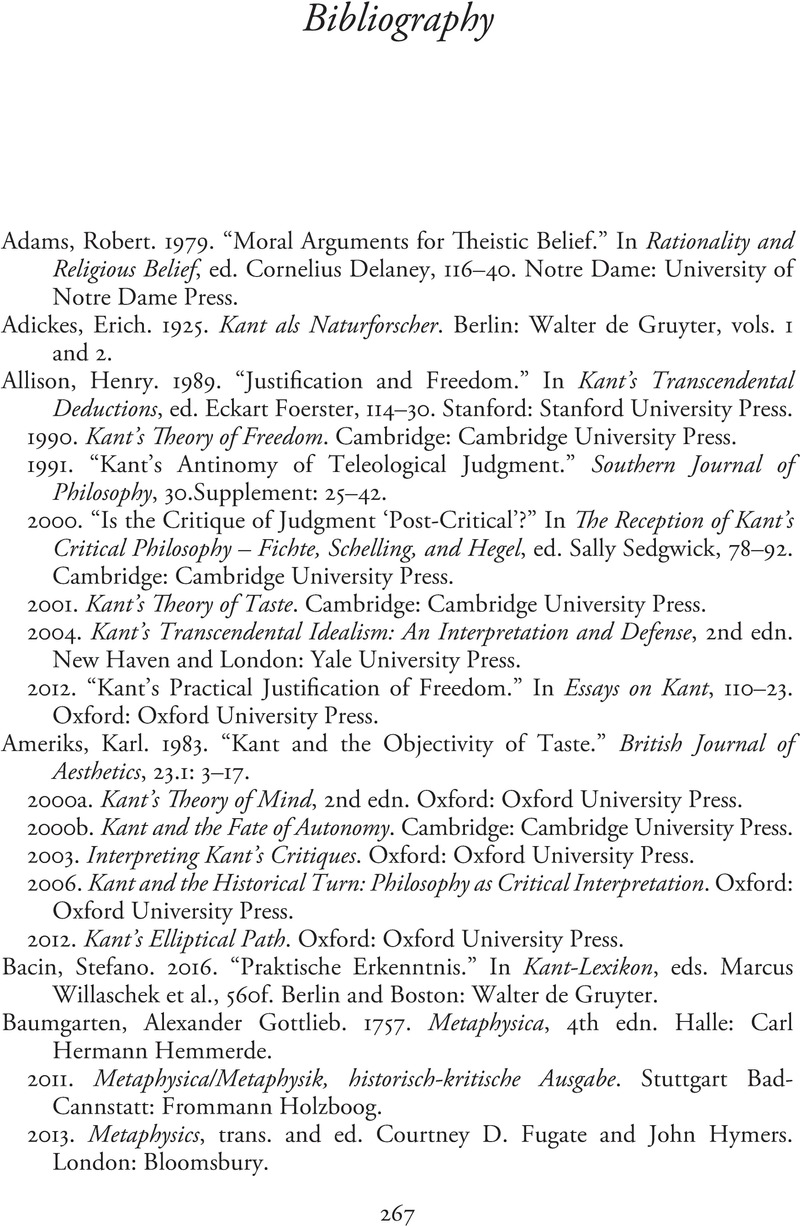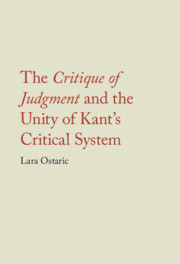Book contents
- The Critique of Judgment and the Unity of Kant’s Critical System
- The Critique of Judgment and the Unity of Kant’s Critical System
- Copyright page
- Contents
- Acknowledgments
- Note on Sources
- Kant’s Writings by Abbreviations Used for German Titles with Corresponding Translations
- Introduction
- Part I The Highest Good and the Postulates
- Part II Aesthetic Judgment and the “Moral Image”
- Part III Teleological Judgment and the “Moral Image”
- Bibliography
- Index
- References
Bibliography
Published online by Cambridge University Press: 15 August 2023
- The Critique of Judgment and the Unity of Kant’s Critical System
- The Critique of Judgment and the Unity of Kant’s Critical System
- Copyright page
- Contents
- Acknowledgments
- Note on Sources
- Kant’s Writings by Abbreviations Used for German Titles with Corresponding Translations
- Introduction
- Part I The Highest Good and the Postulates
- Part II Aesthetic Judgment and the “Moral Image”
- Part III Teleological Judgment and the “Moral Image”
- Bibliography
- Index
- References
Summary

- Type
- Chapter
- Information
- The Critique of Judgment and the Unity of Kant's Critical System , pp. 267 - 276Publisher: Cambridge University PressPrint publication year: 2023



